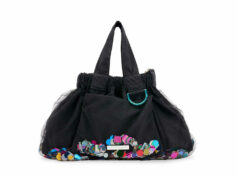Pista ng Pelikulang Pilipino: Whack Job
By Carmen Aquino Sarmiento
MOVIE REVIEW
Watch Me Kill
Directed by Tyrone Acierto
Watch Me Kill got the Pista ng Pelikulang Pilipino award for Best Director, and is the only Filipino film which will be shown at the Warsaw International Film Festival this October.
CINEMA as an art form is show and tell. As for visuality, Watch Me Kill is as purely and poetically cinematic as it gets. The film was not shot digitally but with a classic Kodak 16mm film camera. This is evident in the richness and the careful craftsmanship of the somberly elegant cinematography by Marvin Szocinski, the director Tyrone Acierto’s long-time collaborator. As Acierto wrote in his director’s statement: “There’s a certain texture that cannot be duplicated when shooting with film versus digital. Our test shoot revealed this when we compared the results side by side. We made the decision to shoot the whole film on Super 16mm primarily because the texture we so wanted to exalt is heightened with the use of actual film negative.”
The film’s logline: “Life is precious. Never kill for free,” is more observed in the breach. The opening scene has a bereaved grandfather paying assassin Luciana (Jean Garcia) a wad of P500 bills — easily half a million from the thickness of the envelope — to execute the purported killer of his grandson who has been exonerated by the court. The target turns out to be a mere panadero (baker) in a hole-in-the-wall bakery. When we see how pipichugin (what a powerless nobody) the victim is, we are struck by how overpriced Luciana’s services are. Contract killers for the much-vaunted EJKs targeting similar nobodies (petty pushers, runners, users or even the shirtless istambay and siga — neighborhood toughies) in the slums, are said to do the job for as little as P10,000.
Luciana goes literally for overkill to make up for her exorbitant fee. Her clients get more than they pay for. She wields heavy firearms as well as a wicked machete against the unarmed and peaceful panadero whom she surprises while he is innocently kneading dough in his steaming hot kitchen, wearing just his sando (sleeveless undershirt) and shorts. As lore has it, that is how pan de sal gets its distinctive flavor. As a bonus or a Buy-One-Take-One deal, she also takes out another guy who just happened to open the door for her. As proof of service, she has the poor panadero’s severed head couriered to her client, the vengeful grandfather.
Still jacked up, Luciana goes after the police detective (Bodjie Pascua) investigating the double killings of the panadero and the kitchen helper. She ignores his quietly reasoning with her that he is willing to drop to the case even if she was all over the CCTV surveillance video, since he is about to retire and would like to live out his remaining years in peace. She even kills the SPO1-driver who brought the detective’s take-out upstairs to his apartment. It is then that we realize we are not dealing with an ordinary killer, but a total psycho.
The altered state of reality is further evidenced by the visually compelling, Ansel Adams-like scenes of an ancient long-haired hermit panning, not for gold, but incredibly, for diamonds — a geological impossibility. A gemologist certifies a whopper which the hermit has found in a shallow stream, and an underworld mob boss (Jay Manalo) buys it. When the gemstone turns out to be just quartz, Luciana is again contracted to finish off the hermit and to get back the real diamond, if that even ever existed. Reality is never as it seems here.
This style of filmmaking is unusual in Philippine cinema, so Acierto explained: “The composition of each shot is carefully considered, leaning more towards efficiency of a single long take as opposed to multiple angles of coverage. Scenes are not quickly disrupted by the unnecessary cut. I allowed the pressure of time to build up to its zenith. This technique, perfected by the great Film Director Andrei Tarkovsky, has allowed me to unveil the characters’ weakness, strength, fear and motivation.”
The bar scene where Luciana meets with the mob boss hints at her world’s discrepant synchronicity. The setting is a sleazy bar, with a-go-go dancers in mini-skirts doing the jerk and the frug, as though they had stepped out of a New Wave film or one of those jukebox dance-o-rama musicales which were so popular in the 1960s. Tellingly, they are dancing to “Tintarella dela Luna,” an Italian novelty song of that era, which is about a girl who gets her unique tan under the moon, not the sun. Just as those who are mad are also known as lunatics, Luciana does not have it all together up there.
As her reality becomes ever more fragmented, Garcia’s stony-faced demeanor starts to crumble as well. There are flashbacks which attempt to explain her madness as being the result of deep trauma: she was abducted and trafficked as a young girl, or given how crazy she is, at least she believes that she was. Trapped in her own darkness, Luciana renames the little girl (Junyka Santarin) whom she encounters “Aurora,” for the dawn. Luciana’s violence grows ever more compulsive. Unfortunately, most of its victims are the poor: the good Samaritans who stopped to check on the fallen hermit, even the vegetable farmer who had nursed and sheltered her after she escaped from the mob boss. For the latter, she not only shoots him, but when she has run out of bullets, she does not reload, but bludgeons him to death instead. Then she takes over his land. The cruel and senseless deaths of these hapless supernumeraries might be taken as a veiled commentary on similar collateral damage in the Philippines’ ongoing war on drugs, four years long and still going strong.
Watch Me Kill is tagged as a psychodrama cum action thriller. It was an official selection in the 2018 Bucheon International Fantastic Film Festival (BIFAN) in Bucheon City, South Korea under the film market event: Network of Asian Fantastic Films (NAFF). It will be shown at the Warsaw International Film Festival this October.
Given the film’s complexity, the director may further explain: “My concept for this film is one that pushes the traditions of observational cinema, posing questions of craft, utilizing formal devices that shatter the illusion of reality, while honoring the potential for naturalism inherent in working with a professional and non-professional cast and real environments. I’m influenced by cinema that maintains an aesthetic style of storytelling, blends documentary and narrative technique and succeeds with vigor and precision at painting rich portraits of human beings in their time.”
Like other works of art, it is beautiful, baffling and frightening all at the same time.



